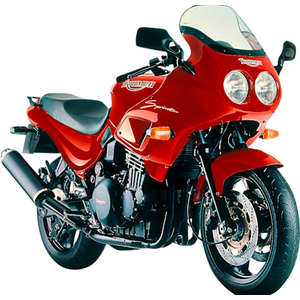Triumph Sprint 900 (1996-1998): A Sport-Touring Icon Revisited
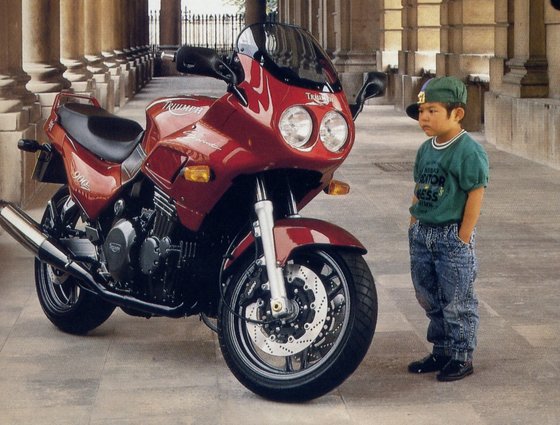
Introduction
The Triumph Sprint 900 stands as a testament to Britain’s motorcycle renaissance in the 1990s. Produced between 1996 and 1998, this inline-three sport-touring machine carved its niche with a blend of British character, touring practicality, and spirited performance. Two decades later, it remains a compelling choice for riders seeking a visceral yet refined experience. Having spent time with a well-preserved 1997 model, it’s clear why the Sprint 900 still commands respect—and why it’s worth keeping one in top shape with modern upgrades.
Design & Styling
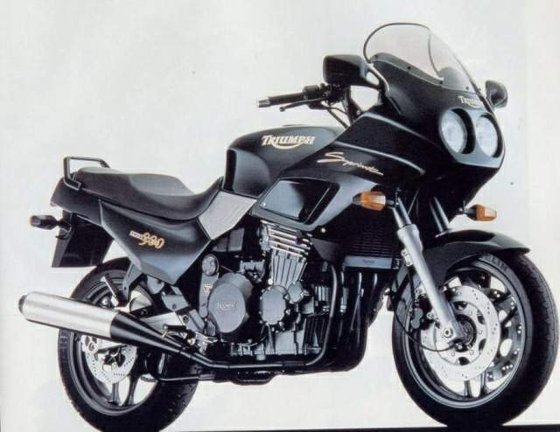
The Sprint 900’s design is a masterclass in functional elegance. Its half-fairing strikes a balance between wind protection and minimalist aggression, with a rounded headlight cluster that nods to classic Triumph styling. The trellis frame, painted in contrasting silver, adds mechanical drama, while the sculpted 25-liter fuel tank (6.6 US gal) promises long-haul endurance.
At 780 mm (30.7 inches), the seat height accommodates most riders, though the wide saddle and pulled-back handlebars create a posture that’s neither fully upright nor aggressively leaned. The analog gauges—a 200 mph speedometer and tachometer—feel delightfully optimistic, though the indicator lights could use brighter bulbs for daytime visibility.
Engine Performance: The Heart of the Matter
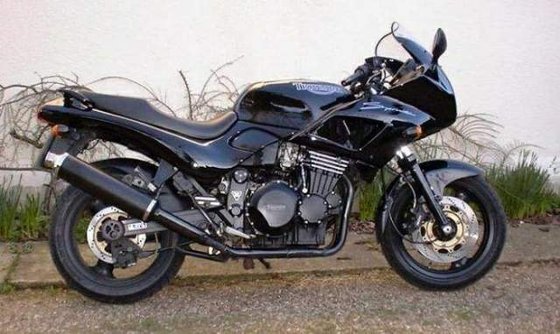
The 885cc liquid-cooled inline-three is the Sprint’s pièce de résistance. With 98 HP (72 kW) at 9,000 RPM and 83 Nm (61.2 lb-ft) of torque peaking at 6,500 RPM, this engine thrives on revs but delivers punchy midrange responsiveness. Cold starts are drama-free thanks to the electric starter, and the Mikuni CV carburetors (3x 36mm) provide crisp throttle response once warmed up.
Riding the Sprint 900 today, its powerband feels timeless. Below 4,000 RPM, it’s docile enough for city traffic. Crack the throttle open past 5,000 RPM, and the triple’s signature growl transitions into a rising snarl as it charges toward its 9,500 RPM redline. The 6-speed gearbox shifts with a satisfying mechanical click, though the cable-operated clutch requires a firm pull in stop-and-go traffic.
Top speed is quoted at 225 km/h (140 mph), but the real joy lies in its acceleration: 0-100 km/h (0-62 mph) in 3.9 seconds and a quarter-mile in 11.3 seconds. For a 90s machine, these numbers still hold up against modern middleweights.
Handling & Dynamics
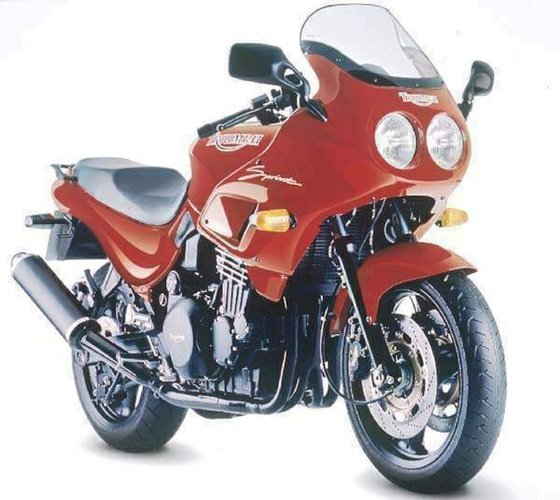
Weighing 215 kg dry (474 lbs) or 239 kg wet (527 lbs), the Sprint isn’t a featherweight. Yet its steel trellis frame and 43mm telescopic forks (117mm travel) deliver surprising agility. The wide handlebars provide leverage for quick direction changes, though low-speed maneuvers feel initially top-heavy.
The Bridgestone Battlax tires (120/60 ZR17 front, 130/70 ZR18 rear) offer ample grip, and Triumph’s recommended pressures—2.5 bar (36 psi) front, 2.9 bar (42 psi) rear—strike a balance between stability and compliance. The tri-link rear suspension (adjustable preload and rebound damping) handles rough roads with poise, though factory settings err toward stiffness.
Braking performance is confident for its era, with dual 310mm front discs gripped by 4-piston calipers and a single 255mm rear disc. ABS wasn’t an option, so threshold braking requires practice, especially in wet conditions.
Comfort & Touring Credentials
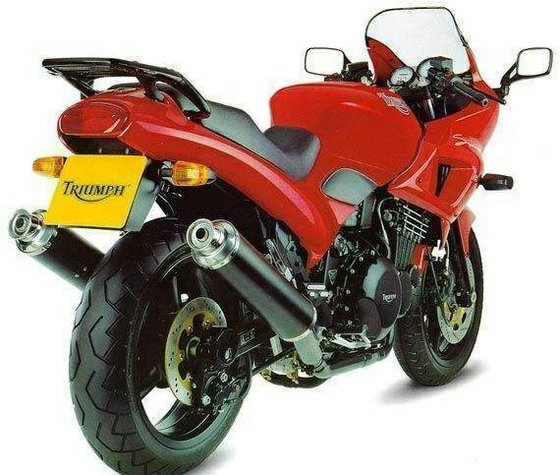
As a sport-tourer, the Sprint 900 shines. The half-fairing deflects windblast effectively at highway speeds, and the seat—firm yet supportive—allows 2-hour stints without numbness. Fuel consumption averages 6.1L/100 km (38.6 US mpg), giving a theoretical 400 km (248 mi) range from its 25-liter tank.
Practical touches include a center stand (a godsend for chain maintenance) and a wiring harness ready for aftermarket accessories. The lack of factory luggage options is a minor quibble, but the aftermarket has since filled this gap with robust solutions.
Competition: How It Stacks Up
The late-90s sport-touring segment was fiercely contested. Here’s how the Sprint 900 compared:
- Honda VFR750F (1994-1997): Honda’s V4 offered smoother power delivery and VTEC innovation post-1998, but the Sprint countered with superior low-end torque and a rawer exhaust note.
- Yamaha FJ1200 (1991-1996): Yamaha’s 1,188cc inline-four had more power (145 HP) but weighed 267 kg (589 lbs). The Sprint felt nimbler in corners and more engaging overall.
- BMW R1100RS (1993-2001): BMW’s boxer twin prioritized touring comfort with standard ABS and shaft drive. However, the Sprint’s triple engine was more exhilarating, and its chain final drive allowed easier gearing changes.
Where the Triumph stood out was its character. The VFR and FJ were clinically efficient; the Sprint felt alive, with a throaty exhaust and tactile feedback that connected rider to road.
Maintenance: Keeping the Sprint 900 Thriving
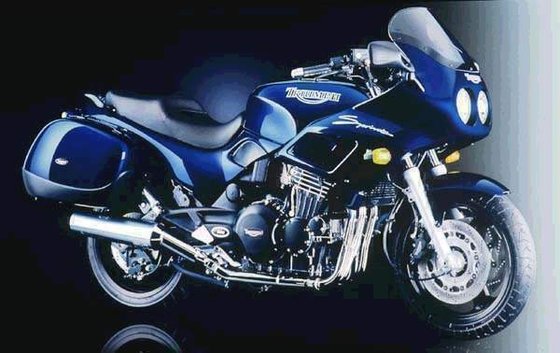
Ownership longevity hinges on proactive care. Here’s what to prioritize:
- Valve Adjustments
- Intake: 0.10–0.15 mm (0.004–0.006 in) cold
-
Exhaust: 0.15–0.20 mm (0.006–0.008 in) cold
Check every 12,000 km (7,500 mi). Stethoscope-like ticking is normal; metallic clattering is not. -
Oil & Fluids
- Engine oil: SAE 10W-40 (4.0L with filter). Consider synthetic blends for better heat management.
- Coolant: 2.8L of ethylene glycol. Flush every 2 years.
-
Brake fluid: DOT 4. Replace biannually to prevent moisture buildup.
-
Carburetor Tuning
Mikuni CV carburetors demand synchronization every 8,000 km (5,000 mi). A Morgan Carbtune tool simplifies this. -
Chain & Sprockets
The 110-link chain and 17/43 sprocket combo (or 17/46 on some models) wears faster than shaft drives. Clean with kerosene and lubricate every 500 km (310 mi). -
Ignition System
NGK DPR8EA-9 plugs (gap 0.9 mm) fire reliably, but upgrade to iridium DPR8EIX-9 for longer service intervals.
MOTOPARTS.store Recommendations:
- High-performance air filters for improved carb response
- Aftermarket exhaust systems to unlock the triple’s acoustic potential
- Progressive-rate fork springs for sharper front-end feel
Conclusion
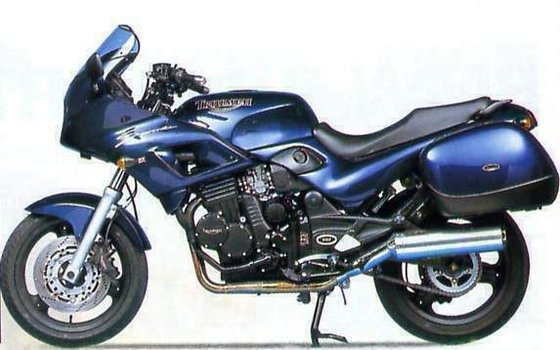
The Triumph Sprint 900 isn’t just a relic of the 90s—it’s a living legend. Its triple-cylinder engine remains a benchmark for emotional engagement, while its touring capabilities defy its age. For riders seeking a classic with modern relevance, the Sprint 900 delivers. And with MOTOPARTS.store’s curated selection of upgrades and OEM-quality components, keeping one on the road (or trail) is easier than ever.
Whether you’re restoring a barn find or optimizing a daily rider, the Sprint 900 rewards those who invest in its care. As Triumph’s phoenix-like revival symbol, this bike doesn’t just carry passengers—it carries history.
Revive. Ride. Repeat.

Specifications sheet
| Engine | |
|---|---|
| Stroke: | Four-stroke |
| Max power: | 73 kW | 98.0 hp |
| Max torque: | 78 Nm |
| Fuel system: | 3 x 36mm Mikuni CV carburetors |
| Max power @: | 9500 rpm |
| Displacement: | 885 ccm |
| Max torque @: | 6500 rpm |
| Configuration: | Inline |
| Cooling system: | Liquid |
| Compression ratio: | 10.6:1 |
| Number of cylinders: | 3 |
| Valves per cylinder: | 4 |
| Dimensions | |
|---|---|
| Dry weight: | 215 |
| Wet weight: | 239 |
| Seat height: | 780 mm (30.7 in) |
| Fuel tank capacity: | 25 L (6.6 US gal) |
| Drivetrain | |
|---|---|
| Final drive: | chain |
| Chain length: | 110 |
| Transmission: | 6-speed, wet cable-operated clutch |
| Rear sprocket: | 43 |
| Front sprocket: | 17 |
| Maintenance | |
|---|---|
| Rear tire: | 130/70 z-18 |
| Engine oil: | 10W40 |
| Front tire: | 120/60 z-17 |
| Brake fluid: | DOT 4 |
| Spark plugs: | NGK DPR8EA-9 or NGK DPR8EIX-9 |
| Spark plug gap: | 0.9 |
| Coolant capacity: | 2.8 |
| Forks oil capacity: | 1.2 |
| Engine oil capacity: | 4.0 |
| Engine oil change interval: | Every 5000 km or 2 years |
| Valve clearance (intake, cold): | 0.10–0.15 mm |
| Valve clearance check interval: | 24,000 km / 15,000 mi |
| Valve clearance (exhaust, cold): | 0.15–0.20 mm |
| Recommended tire pressure (rear): | 2.9 bar (42 psi) |
| Recommended tire pressure (front): | 2.5 bar (36 psi) |
| Chassis and Suspension | |
|---|---|
| Frame: | Steel trellis |
| Rear brakes: | Single 255 mm disc, 2-piston caliper |
| Front brakes: | 2 x 310 mm discs, 4-piston calipers |
| Rear suspension: | Tri-link monoshock, adjustable rebound damping and spring preload |
| Front suspension: | 43mm telescopic forks |



